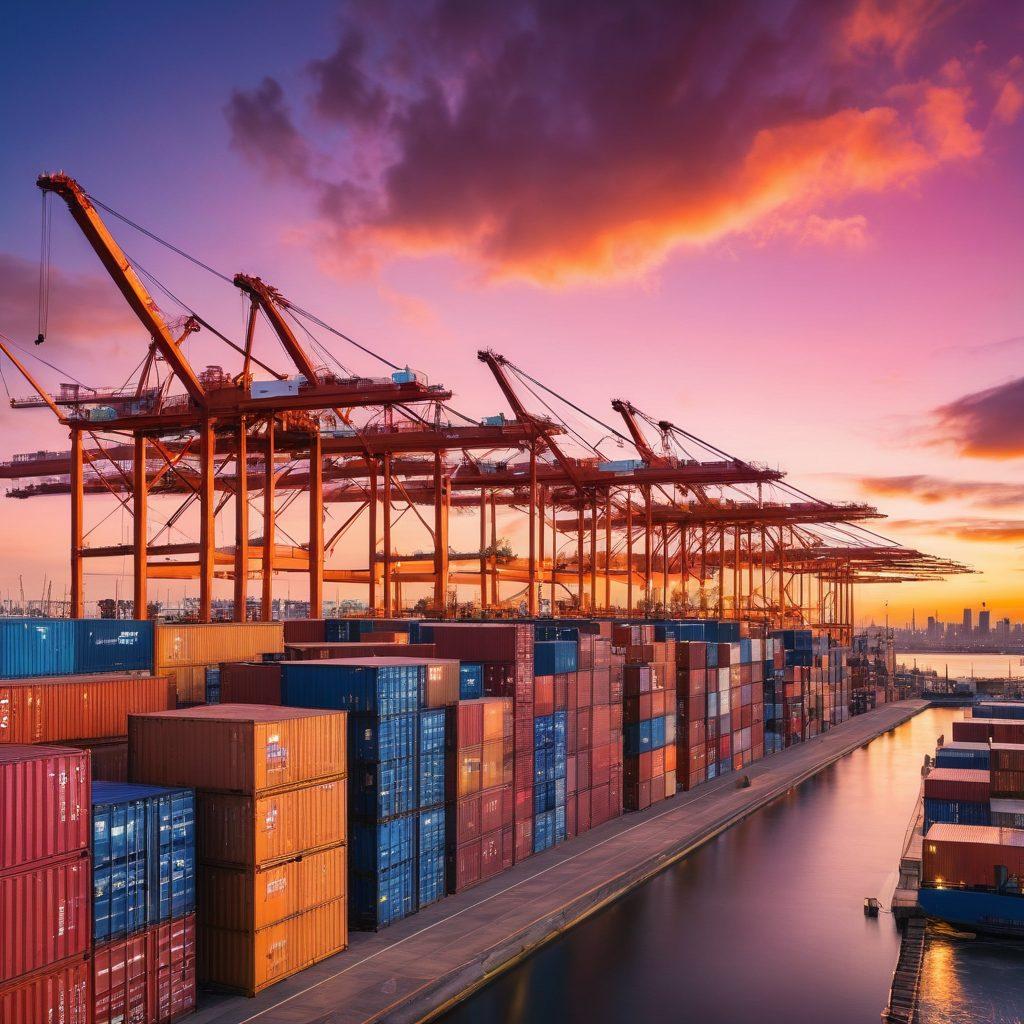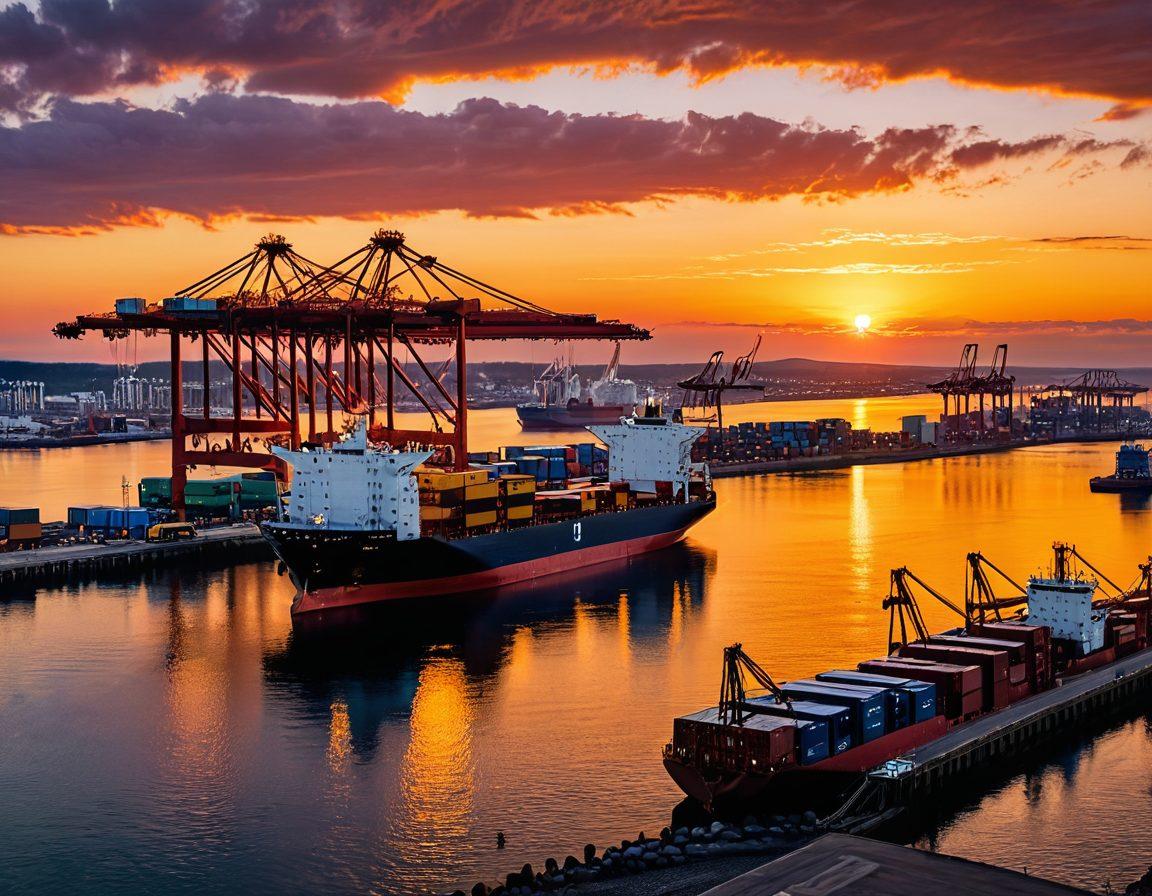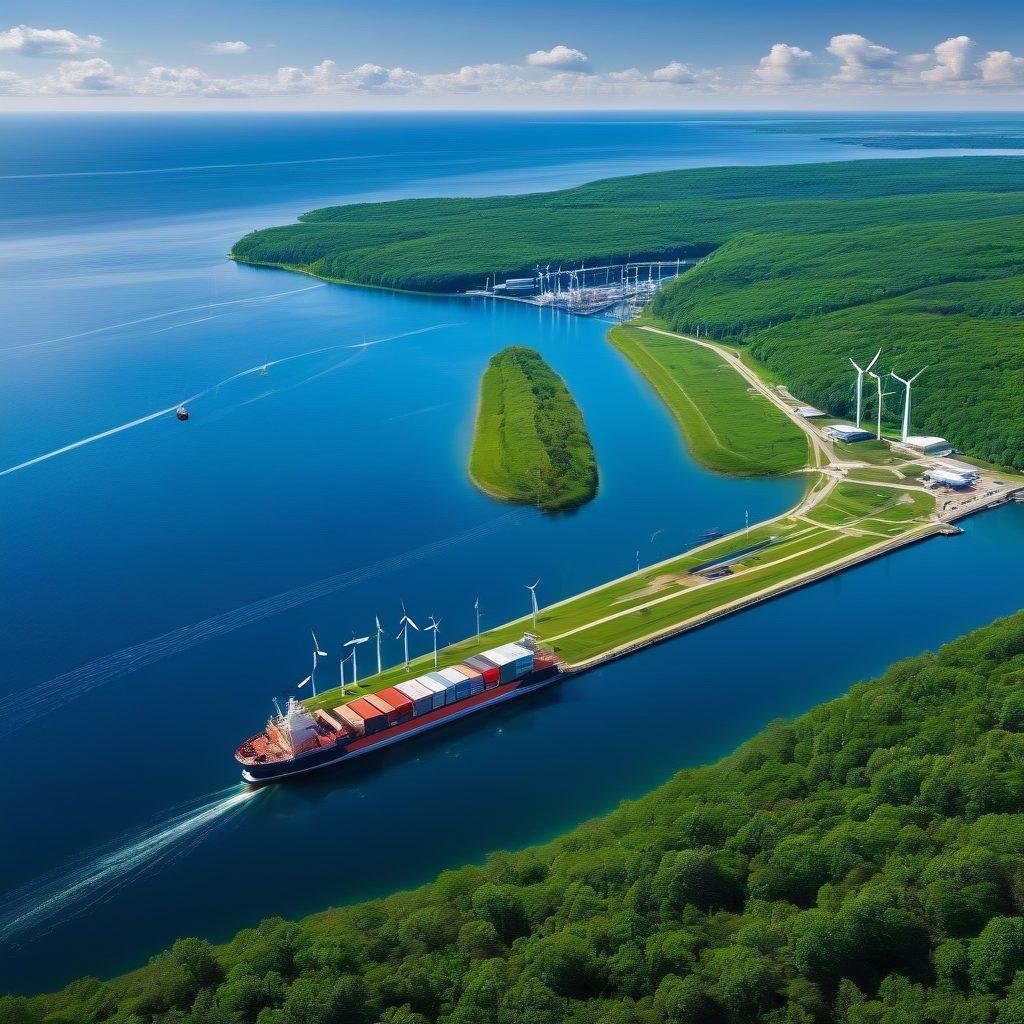Navigating the Future: Key Trends Shaping the Duluth Shipping Industry
In the heart of the Great Lakes lies Duluth, a hub of maritime activity that connects North America to international shipping routes. As the world evolves and global trade increases, the shipping industry in Duluth stands at the forefront of a remarkable transformation. Innovations and technology are redefining this sector, making it essential to explore how these changes are charting new waters in the logistics and transportation landscape. This isn’t just about cargo movement; it’s a dynamic story about advancements that promise to enhance efficiency, sustainability, and competitive edge. So, what are the key trends that are shaping the future of Duluth's shipping industry?
One of the most exciting trends emerging in maritime transport is the surge of technology in shipping. Advanced data analytics and AI are being applied to optimize shipping routes and improve inventory management. Imagine a world where vessels are monitored in real-time, providing precise updates for logistics teams, and making it possible to anticipate delays before they occur. The anticipation of freight arrival would become less a guessing game and more a calculated science. As one industry expert puts it, "In today’s shipping landscape, knowledge truly is power, enabling ports like Duluth to operate more efficiently than ever before." These tools yield not only timely information but also smarter decision-making, ensuring that shipping updates become second nature in day-to-day operations.
Additionally, sustainability concerns have permeated the shipping industry, leading to a renewed focus on eco-friendly practices. Duluth’s shipping industry is embracing this challenge through greener technologies and practices, such as the use of biofuels, energy-efficient vessels, and stringent shipping regulations aimed at reducing maritime pollution. Stakeholders understand the importance of balancing economic growth with environmental responsibility, fostering a shipping landscape that future generations can appreciate. Are we prepared to make the necessary sacrifices for sustainable maritime commerce? The answer lies in the grit of the industry—taking steps today to ensure a cleaner tomorrow.
Further, digitalization has transformed the way logistics and transportation operate in Duluth’s ports. By streamlining processes through the adoption of the Internet of Things (IoT), shipping companies can maximize dock utilization and minimize delays. Smart sensors and tracking systems enable unprecedented efficiency in managing cargo flow—reducing idle time for vessels and optimizing line-haul shipping. The rapid advancement of marine commerce is setting the stage for enhanced collaboration among all stakeholders, from shipbuilders to freight carriers. These improvements not only drive down costs but also elevate the performance and reliability of the shipping industry as a whole.
As we look to the horizon, it is clear that the future of Duluth's shipping landscape is poised for remarkable growth—in part spurred by bold innovations and a commitment to excellence in marine transportation. The trends we discussed—technological advancements, sustainability efforts, and digitalization—are reshaping the industry, crafting a narrative of resilience and adaptability. In conclusion, keeping an eye on local shipping news and emerging shipping trends will empower businesses to navigate unforeseen challenges and seize new opportunities. What do you think? Are we ready to embrace these changes and redefine what it means to be part of the shipping industry in Duluth?
Connecting Commerce: How Duluth's Ports are Redefining Supply Chain Efficiency
In the heart of the Great Lakes, Duluth stands as a vital commercial hub, reshaping the narrative of supply chain efficiency in the shipping industry. But as we sail into the future, what trends are steering Duluth's ports towards a new horizon in transportation? The answer lies in the combination of innovation, technology, and strategic location that Duluth leverages to redefine the landscape of maritime trade. As we delve into this intriguing world, we’re greeted by the powerful connection between local infrastructure and global commerce – and it’s nothing short of transformative.
Imagine a bustling harbor where massive vessels enter and exit, carrying cargo that fuels economies across the globe. This vivid image is becoming increasingly common at Duluth’s docks. The range of goods transported through these ports not only reflects Duluth's logistic capabilities but also highlights its potential in international shipping routes. With advancements in shipping technology and improved inventory management, Duluth is meeting and exceeding the demands of modern trade. Have you ever wondered how a local port affects global supply chains? Here, the answer is straightforward – by streamlining operations and enhancing cargo flows, Duluth is becoming a powerhouse in marine commerce.
One of the most exciting developments in Duluth's shipping industry is the modernization of its shipping routes. Recent shipping updates illustrate that partners within the maritime sector are innovating to ensure that Duluth remains competitive against other ports. This includes the introduction of new vessels designed for efficiency, reducing transit times and fuel consumption. As shipping statistics show an uptick in freight traffic, we find ourselves asking: how does Duluth’s evolution impact shipping trends across the Great Lakes? The answer lies in its commitment to enhancing trade routes while adhering to shipping regulations that prioritize safety and sustainability.
The way forward for Duluth isn’t merely about increasing the number of ships in the harbor; it’s about revolutionizing the entire framework of logistics. The integration of smart shipping systems and real-time data analysis means that Duluth’s ports can now predict demand, allocate cargo more effectively, and deploy vessels at optimal times. This is not just logistics news; it’s a game-changer for businesses relying on consistent, reliable service. By prioritizing efficiency, Duluth is not simply keeping pace but is actually defining the future of supply chain efficiency in the maritime shipping landscape. We must ask ourselves – how can other ports emulate Duluth’s successful practices?
This is an exciting time for Duluth and its shipping industry as everything from dock designs to trade agreements is undergoing transformation. Local shipping news indicates that the synergy between Duluth’s ports and surrounding communities is not just beneficial but essential. As economies evolve and global shipping demands shift, Duluth's proactive approach to maritime transportation is a model of responsiveness and innovation. For businesses and consumers alike, embracing these changes means reaping the rewards of improved shipping services and more reliable freight solutions. So, are you ready to witness how Duluth's evolution in the shipping industry will continue to correlate with not just maritime success but overall economic resilience?
Future Forward: Analyzing Emerging Shipping Trends in the Great Lakes Region
The Great Lakes region, particularly the port city of Duluth, stands as the lifeblood of maritime commerce in the United States. As we peer into the future of the shipping industry, we discover a myriad of emerging trends painting an exciting yet complex picture of how logistics and transportation will evolve. The shipping news breathes new life into our understanding of these changes, and we can’t help but ask: how will these trends reshape our economic landscape and our own roles within it?
One of the standout trends influencing Duluth and the wider Great Lakes region is the burgeoning focus on sustainable shipping practices. As environmental regulations tighten globally, the shipping industry is compelled to innovate — think emission-free vessels and alternative fuels that promise to change the face of maritime logistics. Could we be looking at a time when ‘green shipping’ is not just an option but a standard? This is not mere speculation; it’s already happening in our ports. The transition to eco-friendly practices is essential in maintaining not only competitive advantage but also regulatory compliance in today’s climate-conscious market.
As we delve deeper into the world of shipping trends, the modernization of shipping technology stands out prominently. From automated dock operations to advanced supply chain management and inventory control systems, technology is redefining our shipping routes and efficiency. Imagine a future where freight is managed by algorithms that predict supply and demand, minimizing delays and enhancing productivity. The questions arise: are we prepared to adapt to such rapid changes? What skills will our workforce need to thrive? Those engaging in shipbuilding and marine commerce must remain ahead of the curve by integrating these technologies into their operational frameworks.
An emerging trend that certainly commands attention is the shifting dynamics of international trade and its relationship with local shipping news. The geopolitics of trade are transforming the way we view freight and cargo moves in and out of Duluth and the Great Lakes. International shipping routes that were once set in stone are being altered; tariffs, trade agreements, and even diplomatic relationships sway the cargo that moves through our harbors. It raises an intriguing thought: how adaptable must our logistical strategies be to keep pace with these changes? This versatility can make the difference between remaining competitive or becoming obsolete on the world stage.
Finally, the importance of data analytics in the shipping industry brings us to the highly topical subject of shipping statistics. The utilization of big data enables companies to forecast trends, monitor vessel performance, and enhance customer service. For the logistics teams in Duluth, this translates to more informed decision-making and effectiveness across the board. How can we harness this powerful tool to ensure smooth waterway transport? The answer lies in embracing innovation and fostering a culture of continuous learning, ensuring that we remain responsive to the fast-evolving narrative of the shipping industry and the broader maritime landscape.


